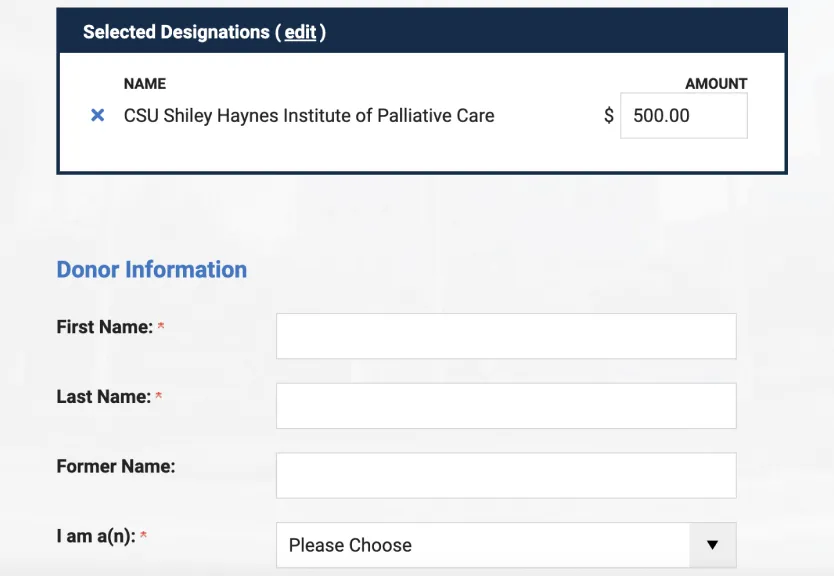Gender Questions Challenge Hospice and Palliative Professionals to Come Down on the Side of Inclusivity
Applying the evolving concepts of inclusivity in gender identity and sexual orientation to hospice and palliative care service delivery is not easy, says Karla Schroeder, DPN, RN, ANP-BC, Assistant Chief Nursing Officer for Patient Care at Emory Healthcare in Atlanta, Ga. “And it’s okay that it’s not easy,” adds Schroeder, who is an instructor for the CSU Shiley Institute for Palliative Care’s Advanced Practice Nursing Certificate in Palliative Care course. She also teaches for the End-of-Life Nursing Education Consortium as well as presenting webinars on how to communicate with gender-diverse patients.
There is heightened awareness and interest in this topic right now. “People want to know more, they want to learn, and they want to say the right thing and not offend their clients. They want to be inclusive and to support patients and families.” Even in hospice and palliative care, the evolving landscape of self-identity presents challenges, although this field’s whole-person approach and emphasis on communication could put it in a better position to respect its clients’ personal needs, she says.
Other research on health care for LGBT elders has identified unequal treatment, fears of being judged by providers, and reports of feeling unsafe, disrespected, or abused—even a sense that they need to re-enter the closet to have their basic care needs met. A survey of patients cared for in hospice and palliative care settings, published in the Journal of Palliative Medicine in May of 2020, documented “strong evidence” that LGBT patients are more likely to receive discriminatory care (Stein et al., JPM; 2020 Jun; 23(6):817-824). Their partners, spouses, or designated surrogates may be treated disrespectfully, have their treatment decisions ignored or minimized, and even be denied access to the patient—with profound implications for patients’ trust in their health care. Spirituality and religion can also be fraught subjects for LGBT patients.
Inclusivity, by contrast, starts with language, Schroeder says. And her preferred terminology is LGBTQIA+, which encompasses lesbian, gay, bisexual, transgender, Queer, questioning, intersex, allies, and “+” to cover everything on the gender and sexuality spectrum that letters and words can’t yet describe.
“For me, this is a personal issue,” Schroeder says. “I also belong to this population, and I have seen the complexities that can arise.” For the professional, being open, honest, humble, and unafraid to say they don’t know is a good place to start. Effective, nuanced communication is a staple of palliative care. “But you have to ask the question to get the information.”
Who Is Family?
A fundamental issue in providing inclusive care is the patient’s definition of family—including who they want to be with them when they are seriously ill and who their designated decision-maker is, Schroeder says. “It is crucial to identify who patients define as their family and support them in that choice when disagreements arise. I have seen cases where the people the patient defined as their family are physically removed from the bedside.”
Hospice and palliative care nurses can say, “‘Help me to understand who you define as family and how I can support that.’ We can also provide guidance and instruction through the completion of various categories of advance directives.” These include naming a proxy or durable power of attorney for health care decisions.
Another important consideration, she says, is to recognize that understanding the patient’s beliefs doesn’t mean you have to believe everything they believe. For example, people have different attitudes about the policy of gay marriage. “I can honor your beliefs and still hold my own beliefs. That’s where professionals sometimes get mixed up. It’s about meeting others where they are without devaluing either side’s position—not just our patients but for our colleagues as well,” she says. What professionals need is to be able to distinguish their own beliefs from the person in front of them to promote dignity and respectful care for that person.”
There are lots of books, articles, websites, and other resources from the world of Diversity, Equity, and Inclusion (DEI), Schroeder says. Take time to learn, seek out reputable information/sources and ask questions.
“If folks are willing to be aware, and speak openly to each other, you can develop ongoing conversations about these issues in your agency.” She also suggests including diversity, equity, and inclusion as a topic of conversation and ongoing learning within regular staff meetings regularly.
Nurses’ Leadership Role
Nurses have an important leadership role in promoting inclusivity. “I worry people sometimes think that because ‘I’m a nurse,’ they shouldn’t be asking these questions or gathering this kind of information. It’s not only the hospice/palliative care nurse’s responsibility to ask questions about sexuality, sexual intimacy, and family, it is well within their scope of practice.”
Hospice care, in particular, empowers nurses to have such conversations with patients and bring the information back to the inter-disciplinary team. “We know nursing is among the most highly trusted of professions. Our patients will tell us if we ask. Then, let’s make sure to tell others on our care team, including the social worker, chaplain, and CNA—everybody who brings value to that discussion. We can teach and empower them to ask these questions, as well,” Schroeder says.
“I would say respecting someone else as a whole person is a key to this work. We walk with them on their journey, which will look different for every single person. We allow them to express themselves and we promote dignity on their journey. We’ve gotten better at this in hospice and palliative care and yet there is always more work to be done.” And this June, which is designated as LGBTQ Pride Month, she adds, is a good opportunity for the field to pay more attention to inclusion.




